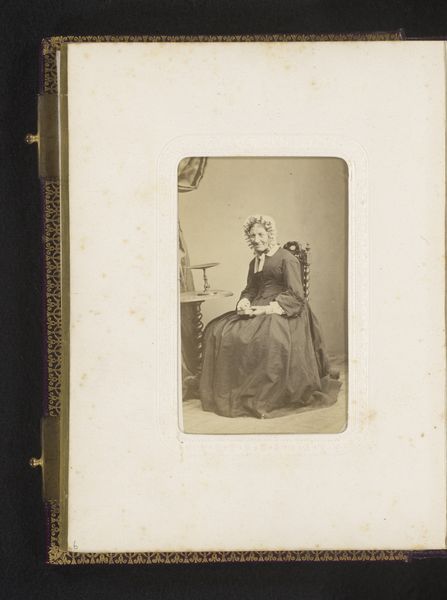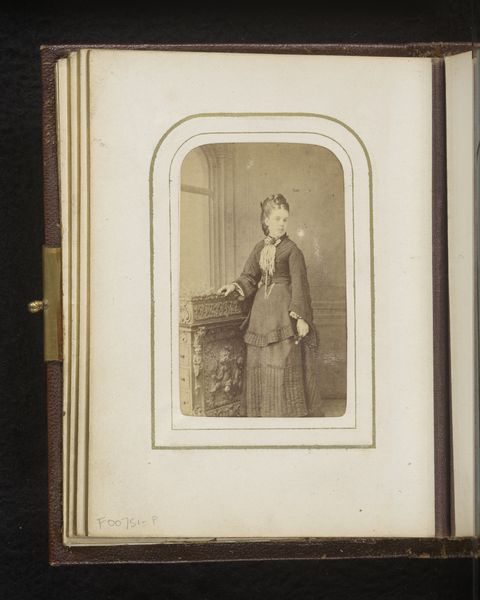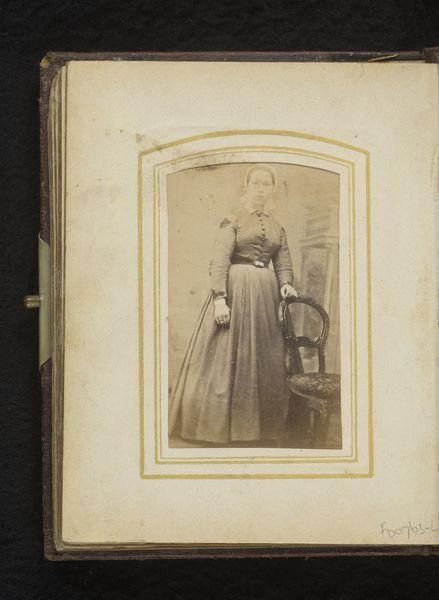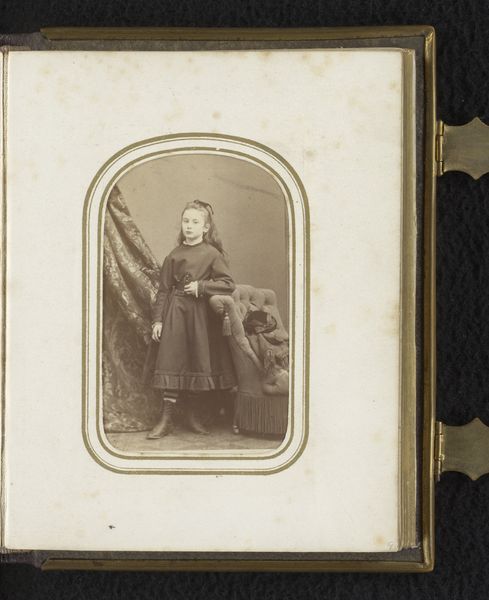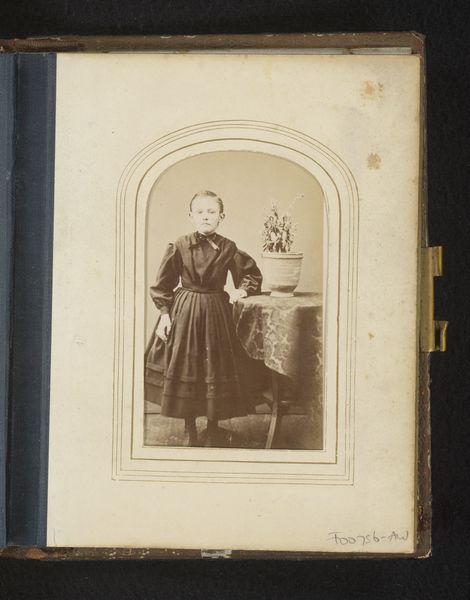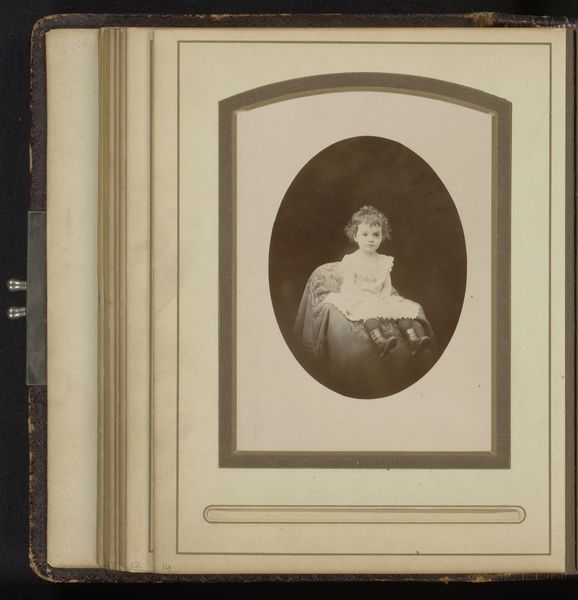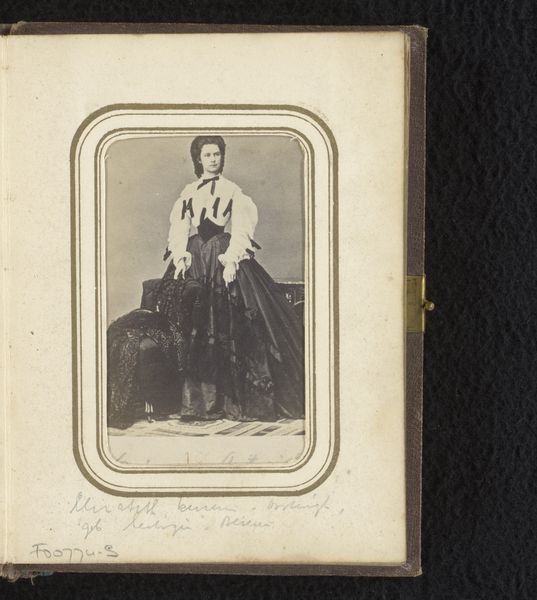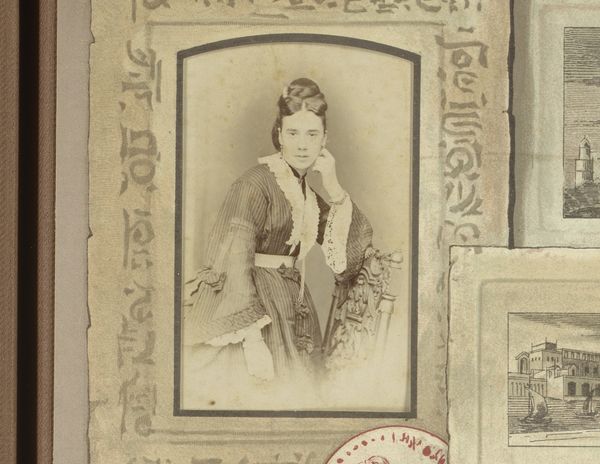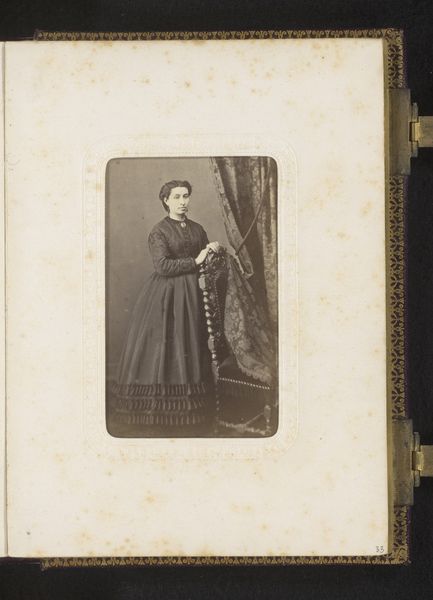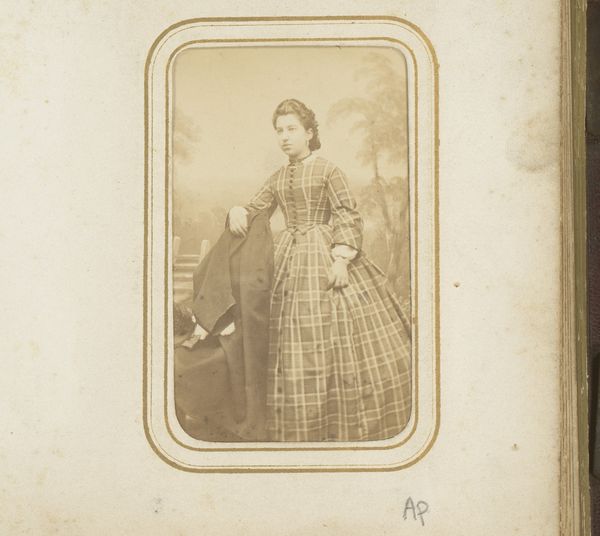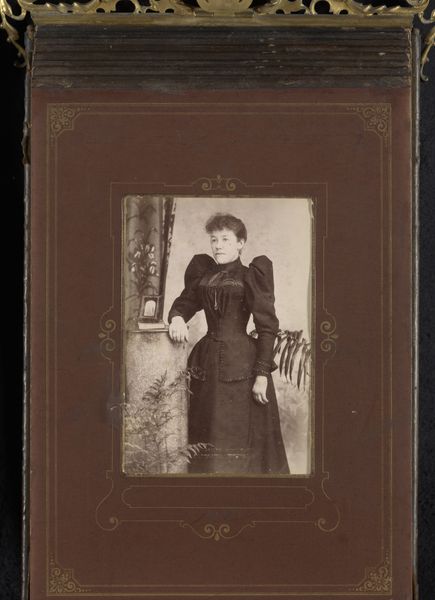
photography
#
portrait
#
photography
#
genre-painting
#
academic-art
#
realism
Dimensions: height 139 mm, width 98 mm
Copyright: Rijks Museum: Open Domain
Editor: This is a photograph titled "Portret van een staande vrouw met waaier in de hand," dating from between 1860 and 1900, and it’s attributed to Dahllöf & Co. The woman's dress seems so formal and her stance rather poised. What can you tell me about this portrait? Curator: It's interesting to view this portrait within the context of burgeoning photographic technologies and shifting social dynamics of the late 19th century. Photography was democratizing representation, making portraits accessible beyond the aristocracy, yet studio portraits often mimicked the conventions of painted portraiture, reinforcing existing social hierarchies through pose and setting. Editor: That makes sense. She looks almost like she’s on a stage! So, this is about more than just making portraits accessible? Curator: Exactly. The painted backdrop, combined with the subject's attire and demeanor, performs a particular kind of femininity for the camera, conforming to and potentially challenging societal expectations. How does the presence of the fan impact your reading of this photograph? Editor: I hadn't thought about it much, but now that you mention it, it seems like such a deliberate addition! It hints at modesty, maybe, or some form of control. Curator: Precisely. Consider how these elements intertwine to construct and communicate her identity within a complex historical and cultural moment. Early photography helped establish the cult of celebrity, and the middle class was now able to emulate wealthy elites. The fan serves as a tool of self-representation and class aspirations. Editor: So it's about understanding how the photo both reflects and shapes the viewer's interpretation of gender and class? I guess I never realized how many layers were involved in even a seemingly straightforward portrait.
Comments
No comments
Be the first to comment and join the conversation on the ultimate creative platform.
